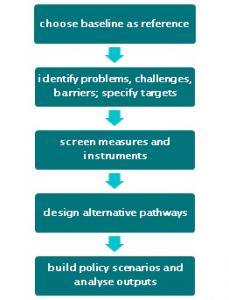A new AQUACROSS report on scenario development has recently been published along with an executive summary. Both are now available online.
The ultimate goal of building scenarios is to inform decision making through the assessment of outcomes from alternative future trajectories, through model analysis, planning with stakeholders or both. Scenarios are thus a valuable tool for the assessment possible alternative future pathways or trajectories of an aquatic social-ecological system that take into account uncertainties. Multiple purposes and benefits are connected to scenario development with stakeholders to improve ecosystem services and biodiversity management.
The report “Scenario Development” reviews the current state of the art of scenario development and analysis, and offers an overview of the scenario development processes within the AQUACROSS case studies. The report further exemplifies how ecosystem-based management in aquatic ecosystems can be supported by participatory scenarios. Following up on the AQUACROSS Assessment Framework (AF), the report paves the way for innovative means to investigate complex, aquatic social-ecological systems. Further, an advancement of a scenario characterisation suitable for linking multiple input sources, stakeholder processes and model analysis on a local case basis is presented.
For the development of policy or management scenarios from an existing baseline, the report suggests a comprehensive five-step procedure (see Figure). First, a relevant baseline needs to be agreed upon with the involved stakeholders as a reference for policy scenario assessments. This will enable the specification of targets, which will need to be done in line with the formulation of an objective for the scenario. Measures and instruments suitable for analysis will be screened, and thereafter, alternative pathways or indicator trajectories can be designed and constructed through models. When the final policy scenarios are built, outputs can be analysed with regard to ecosystem-based management.
The end goal of this report is to describe and explain the scenario building processes, reflecting on different information and data sources, types of stakeholder involvement and scenario uses. This report clarifies concepts and provides guidance on how to develop scenarios, i.e. possible future trajectories of the system, by combining stakeholder processes and modelling in meaningful ways.
The full report and executive summary are available online.


